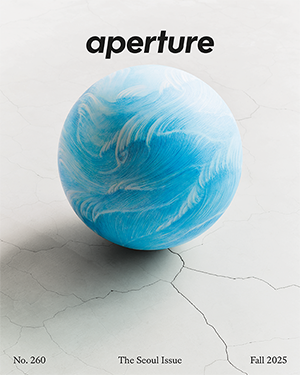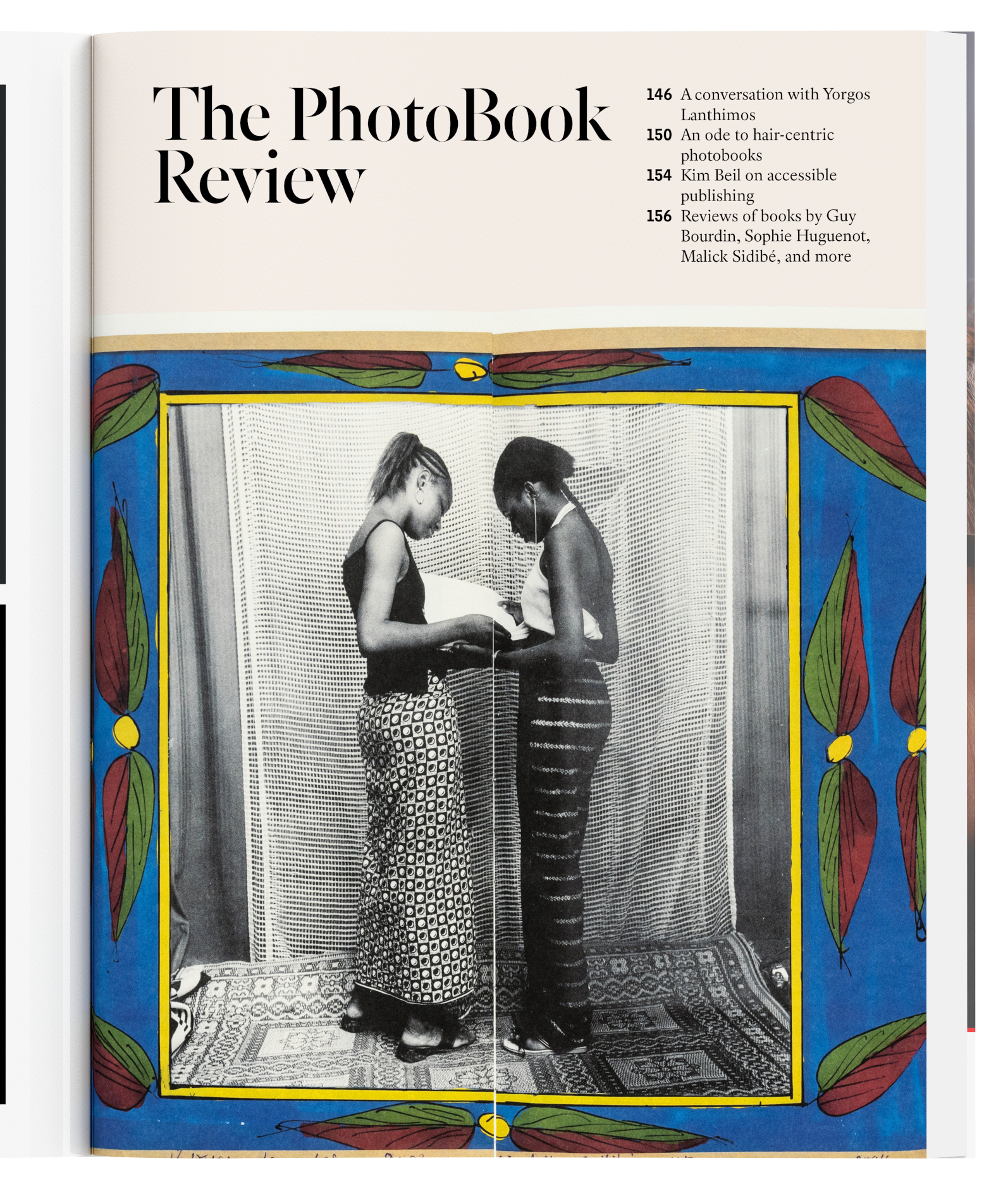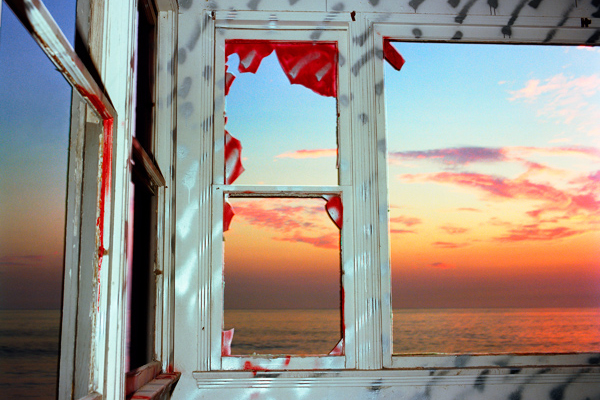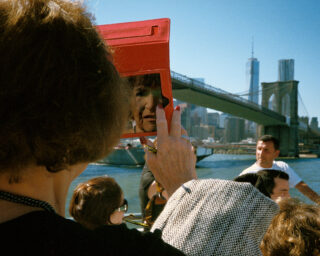Trevor Paglen at Metro Pictures
Trevor Paglen’s new exhibition at Metro Pictures focuses on the unseen images of the Internet: the deep-sea cables that connect massive amounts of data across the globe, and now serve as vulnerable points in cyber warfare. Writer Genevieve Allison considers the effect of our viewing such obscured sites of power in Paglen’s latest series. This article first appeared in Issue 16 of the Aperture Photography App.
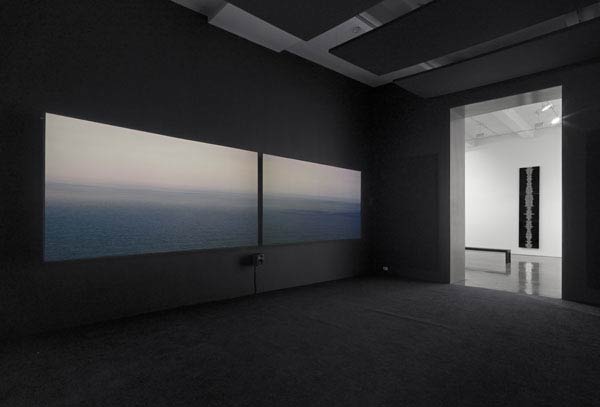
Trevor Paglen, Installation view, 2015. Metro Pictures, New York.
Paranoia has never been far from the causation of war, but as the nature of material reality becomes increasingly virtual, such fears have also become part of its mechanization. And perhaps most central to these transformations is the appropriation of the Internet as an instrument of mass surveillance. In his second exhibition at Metro Pictures, Trevor Paglen delves into the subject of the Internet’s physical geography as well as vulnerability. He looks at where it sits on the earth’s surface, what is its otherwise faceless architecture: vast networks of transoceanic fiber-optic cables laid on the seabed, carrying telecommunication signals between the world’s continents.
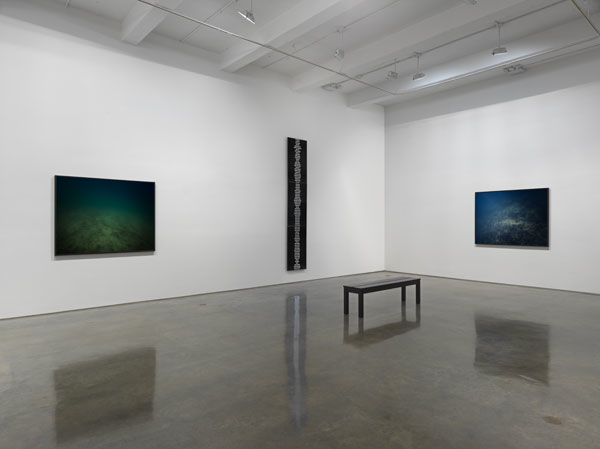
Trevor Paglen, Installation view, 2015. Metro Pictures, New York.
Throughout his many careers—as photographer, fine artist, geographer, author, and independent scholar—Paglen has pursued questions about regulatory prerogative as it relates to surveillance and security, and how these forces shape the public domain and the production of public space, whether mapped, imagined or virtualized. Previous work has investigated, in publication form, the CIA’s extraordinary rendition program (Torture Taxi, 2006) and military iconography (I could tell you but then you would have to be destroyed by me, 2008) but is best recognized through his ethereal photographs of celestial fields and classified landscapes—sublime images informed by the artist’s empirical observation of covert activity. In this latest body of work, Paglen documents and charts the location of major submarine cables, illustrating global data communication in concrete terms rather than through abstract and popularly constructed metaphors like the cloud, the Web, or cyberspace. The real subject, however, is how these sites are targeted and accessed by national security agencies.
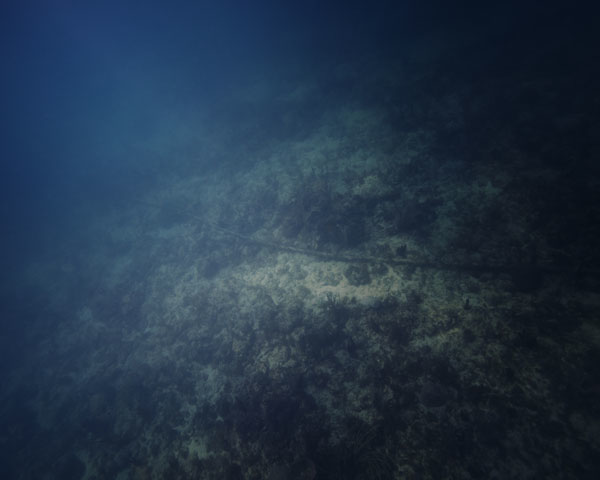
Trevor Paglen, Columbus III, NSA/GCHQ-Tapped Undersea Cable, Atlantic Ocean, 2015
A dual-channel video installation of material Paglen filmed for Citizenfour, Laura Poitras’s Oscar-winning film about Edward Snowden, is the focal point of the exhibition, consisting of a series of photographs, charts, and several sculptures. Throughout the twenty-four minutes of Eighty Nine Landscapes (2015), lonely seascapes, and countrysides unfold with slow, haunting beauty. The video presents locations where main arterial transoceanic cables connect to the continental shelf. More specifically, these “choke points” are where the U.S. government’s National Security Agency (NSA) has installed onshore surveillance utilities to tap information as the cables reach landfall. As the scenery shifts from rolling green hills to windswept coastal expanses, land-based surveillance stations come in and out of view. Their presence—remote, surreal, and unnatural in these picturesque landscapes—are ominous signs of real-world manifestations of virtual activity. It might have once been an abstract, infinitely nebulous space of interpretation, but since the Edward Snowden leaks, the underlying fragility and weaponization of global communication has been exposed and deeply questioned—along with the spying, sabotage, and malware waged through it, outside of public visibility.
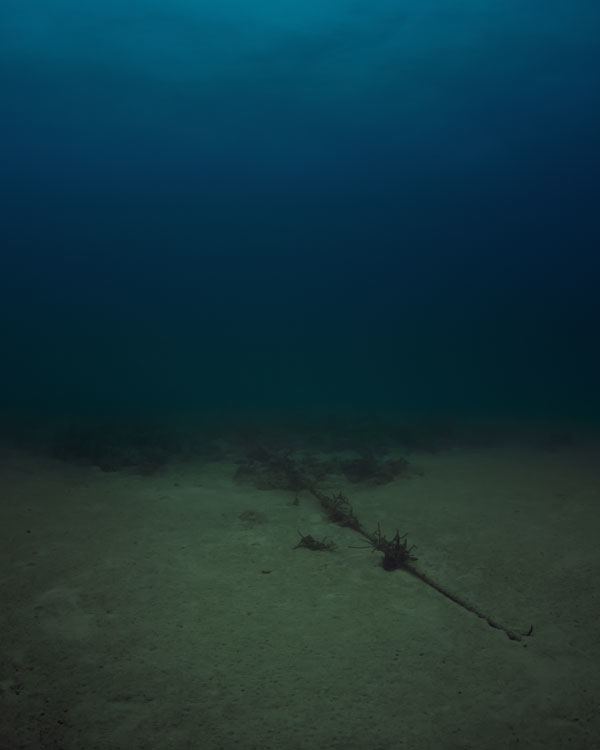
Trevor Paglen, Bahamas Internet Cable System (BICS-1), NSA/GCHQ-Tapped Undersea Cable, Atlantic Ocean, 2015
A series of large-format C-prints of the submerged cables offer another meticulously staked-out vantage point, which Paglen was able to explore after learning to dive and conducting extensive research and fieldwork. The resulting images seem more like inky color-field explorations into aquatic green than surveys of any geographic import, but their titles give reference to their location and significance—photographs such as Globenet NSA/GCHQ-Tapped Undersea Cable Atlantic Ocean, 2015, and Bahamas Internet Cable System (BICS-1)NSA/GCHQ-Tapped Undersea Cable, Atlantic Ocean, 2015. The images trace the obscured existence of this extreme feat of engineering on the seafloor and bring to bear a parallel between perhaps humanity’s greatest achievement and its least explored frontier. The seductive images may seem at a far remove from what we think of as anything resembling conflict photography, but they appeal to its key critical discourses: to illustrate the nature of conflict, and to study its darkest values via an impulse toward aestheticization.
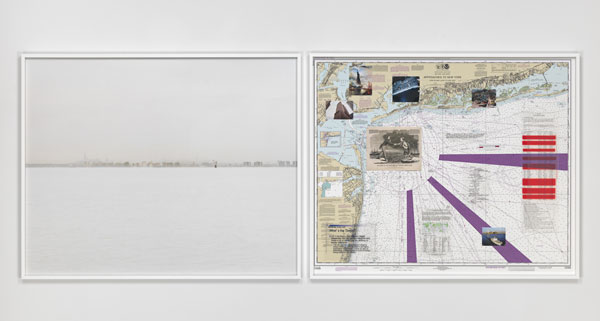
Trevor Paglen, NSA-Tapped Fiber Optic Cable Landing Site, New York City, New York, United States, 2015. All images courtesy the artist and Metro Pictures, New York.
Trevor Paglen is on view at Metro Pictures in New York from September 10 to October 24.
